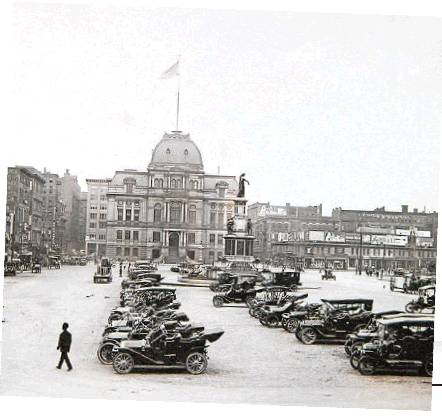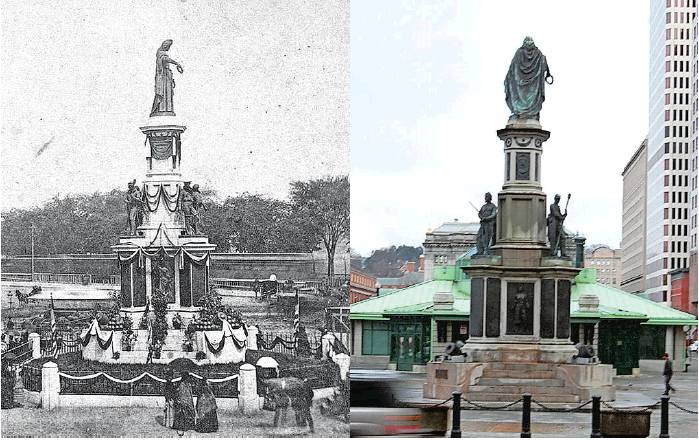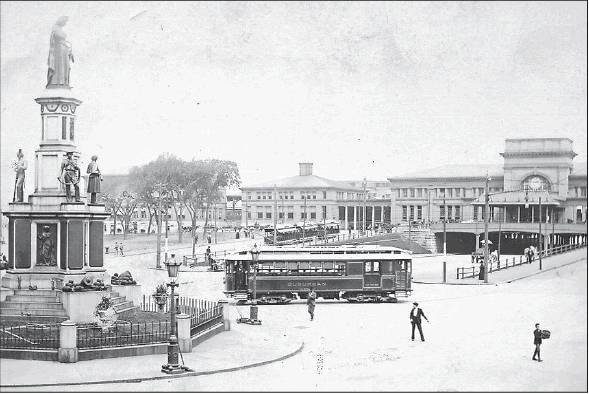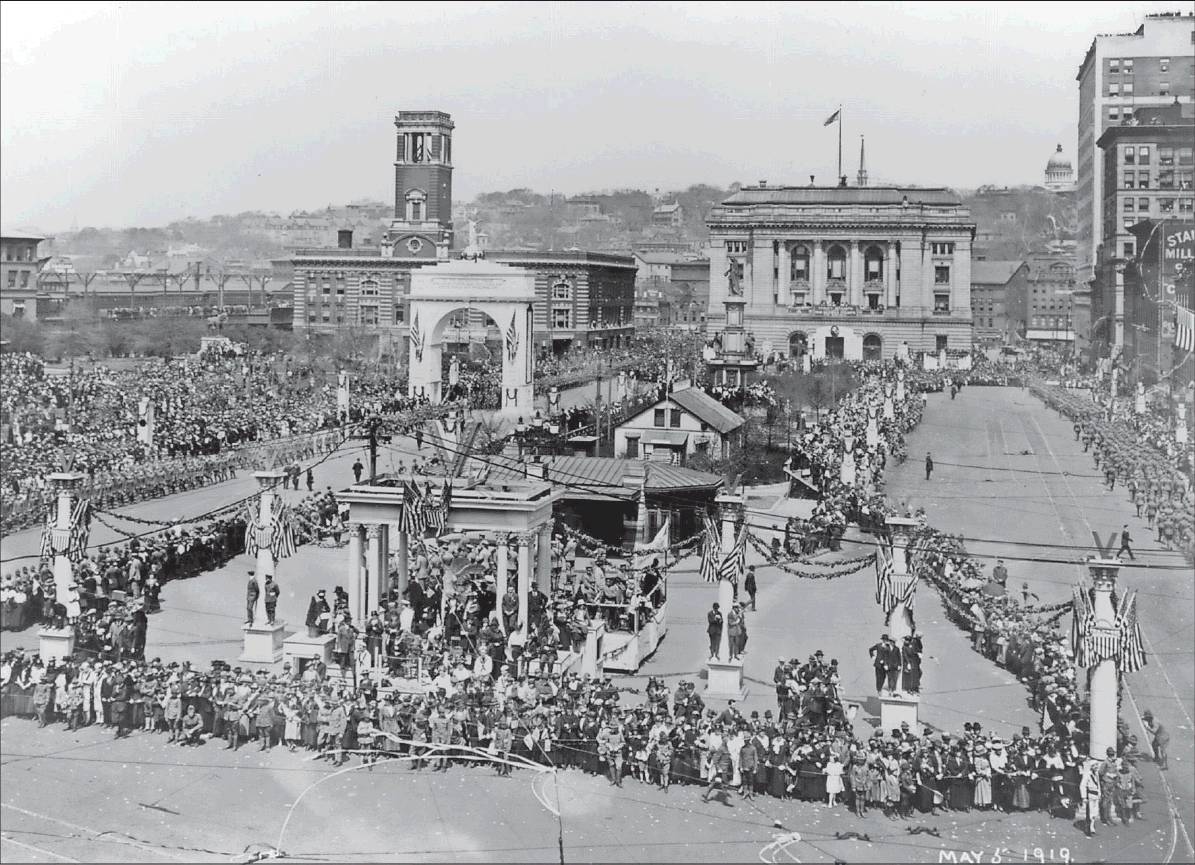PILLAR PROJECT
Under plan, worn-down Soldiers and Sailors Monument in downtown Providence would be restored to its former glory
By Paul Edward Parker Journal Staff Writer
PROVIDENCE — It’s been moved twice, but has remained a fixture in the square in front of City Hall since 1871, and now there’s a drive to give it a face-lift.
The Soldiers and Sailors Monument, honoring the 1,727 Rhode Islanders who gave their lives in the Civil War, is showing signs of age, according to the Downtown Providence Parks Conservancy, which is leading the effort to raise $300,000 to pay for restoration of the monument and improved landscaping of the area around it.
The monument was erected in 1871 in Exchange Place, the area between City Hall and the Providence train station, which took up most of modern-day Kennedy Plaza. The memorial was moved to the center of the plaza in 1913 and relocated in its original position in 2001.
The restoration project would including refurbishing the stone and bronze that makeup the monument, making new cannonballs to replace ones that have been lost and repairing lighting for the monument. A second phase of work would include erecting a low fence around the memorial, in keeping with the original design.
The fence wpuld prevent people from climbing on the monument, according to Geoff Kish, assistant director of the parks conservancy, but, after plaques on the face of it are cleaned, passersby will still be able to read the names of those who died.
Those names include members of the 14th Rhode Island Heavy Artillery Regiment, a so-called “colored” unit, according to Theresa Guzman Stokes, managing director of the Rhode Island Black Heritage Society.
Guzman Stokes said the Soldiers and Sailors Monument is significant for the state’s black history.
“The contribution of African Americans in general in the Civil War is important to remember,” she said. “We don’t have a lot of monuments around the state.”
She hailed the restoration project. “It’s about time we start taking care of our monuments.”
The parks conservancy is working with the city and the Rhode Island Public Transit Authority, the agency that runs the statewide bus system and uses Kennedy Plaza as hub.
The organization has begun raising the $300,000 with a $10,000 grant from a foundation that Kish declined to name. The conservancy has set up a website, www.provparksconservancy.org/ statue, to accept donations. For information, call (401) 521-8800.
Guzman Stokes said monuments to history are important for all of society.
“If we don’t preserve it and we don’t learn from it, we repeat it.”
—pparker@ providencejournal.com
(401) 277-7360
Theresa Guzman Stokes, managing director of the Rhode Island Black Heritage Society, says the Soldiers and Sailors Monument is signifi cant for the state’s black history. “The contribution of African Americans in general in the Civil War is important to remember,” she said. “We don’t have a lot of monuments around the state.”





